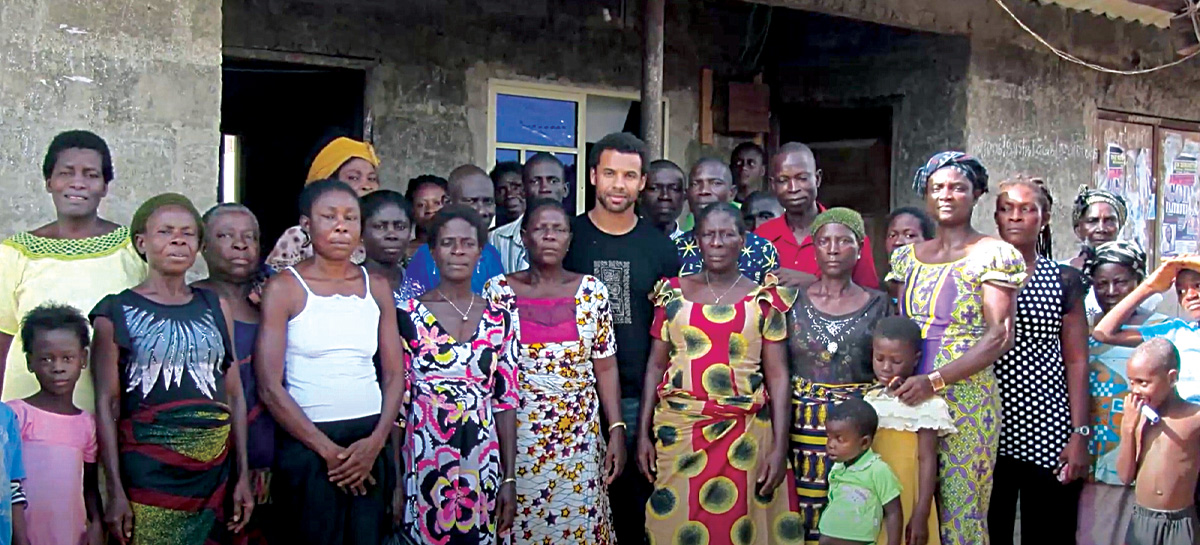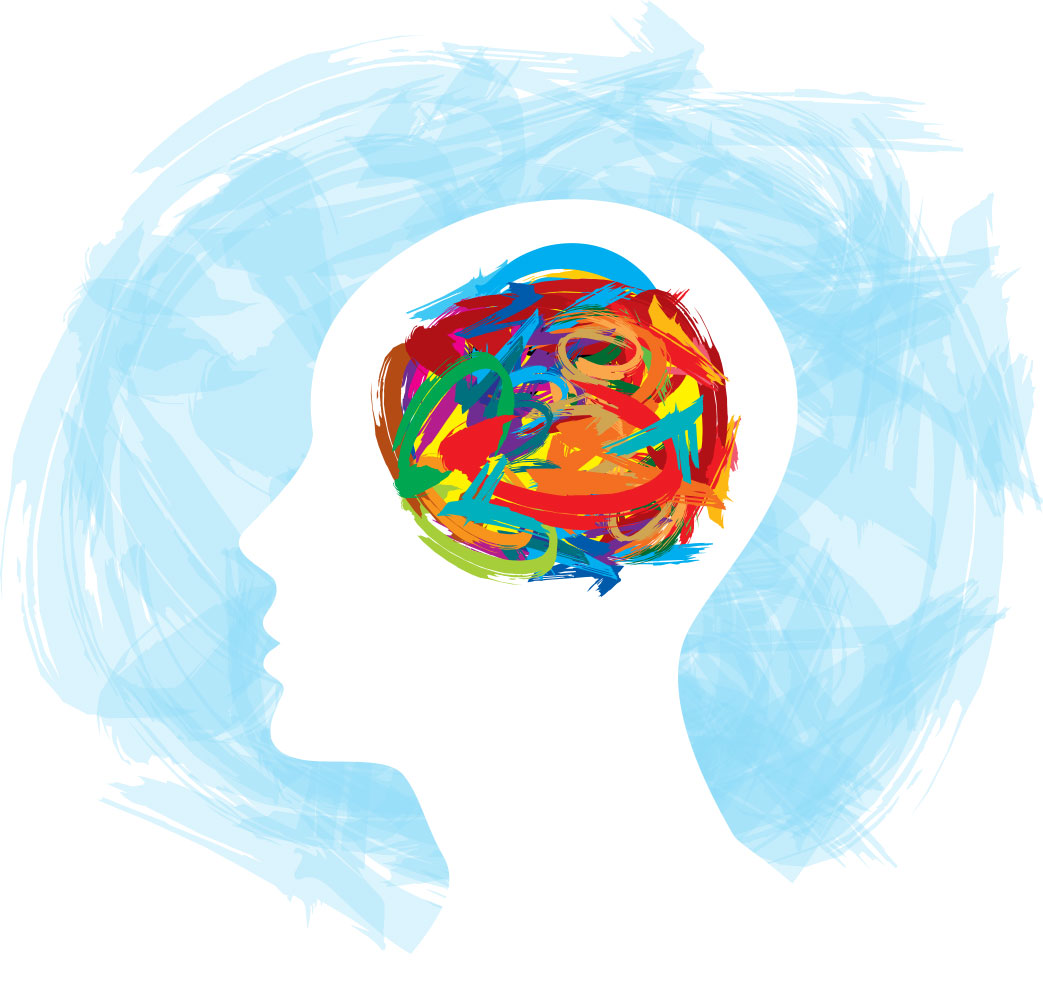
Phantom voices instructed a 13-year-old girl to store knives in her bed, taunted her with vulgarities and convinced her that she could see god, even be a god.
For months, the voices destroyed peace in the family’s home.
“I felt helpless because my daughter’s inner demons wouldn’t go away,” said the teenager’s mother, Takisha, recalling the psychotic episodes that began in early 2020. “Seeing my baby girl being tormented by her inner demons was more horrific than I could ever have imagined.”
Most parents and caregivers feel frightened and helpless when their teenagers and young adults start exhibiting early signs of psychosis. It’s why Daniel T. Mamah, MD, started the Washington Early Recognition Center, a free, outpatient clinic that opened in January 2020 and serves patients ages 13 to 25. It is the only comprehensive clinic in Missouri — and one of a handful in the Midwest — specializing in youth psychosis, including conditions such as schizophrenia and bipolar disorder.
Psychosis is a state of mind that occurs when the brain cannot properly process information, causing a splintered reality in which sufferers cannot distinguish between what is real and what is not. They may hear phantom voices and noises, or see people, creatures and other things that do not exist. They may exhibit paranoia, behave in erratic or strange ways or espouse bizarre beliefs.
As the center’s director, Mamah leads a team of licensed counselors, social workers and psychiatric physicians who collaborate using neuroimaging, elaborate clinical assessments and cognitive testing to diagnose psychotic disorders and monitor symptoms. They develop personalized treatment plans that include a range of services, from individual and group therapy to medication management and programs that support family caregivers. Patients are referred to the clinic by community organizations, schools, pediatricians, psychiatrists or physicians at hospitals.
Funding from philanthropists, foundations and the university allows the center to remove the financial burdens that often impede a person’s ability to receive medical care. “Poverty is a major roadblock to accessing mental health treatment,” Mamah said. “The center’s goal is to provide well-rounded care to young people in an early stage of a psychotic disorder or someone on the psychosis spectrum because we know effective treatment means more than seeing a psychiatrist or getting a counselor.”
Many people with psychosis also experience anxiety, depression or substance abuse. “These conditions can obscure diagnosis and treatment because there is a lot of overlap with psychosis,” said Mamah, also a Washington University professor of psychiatry. “But psychosis goes beyond being nervous or sad. It’s a loss of reality. The person experiencing hallucinations, paranoia or odd behaviors has no insight that there’s something wrong. The person actually thinks those things are happening.”
Although symptoms vary in severity and frequency, a commonality of psychosis is its propensity to confuse, isolate and shame, creating feelings of helplessness among sufferers and their loved ones.
“Mental illness, in general, is stigmatized and misunderstood, but the unpredictability and seemingly bizarre behaviors associated with psychosis can make the disease even more confounding and unsettling,” Mamah said.

Psychosis is more common than many realize. According to federal statistics, about 3% of the overall population will experience a psychotic episode during their lifetimes. Often, the illness begins in early adulthood, with approximately 100,000 young people in the U.S. experiencing a first episode of psychosis every year.
“One of the highest priorities of any clinical program in psychiatry is to offset risk for severe and persistent mental health conditions,” said John N. Constantino, MD, the Blanche F. Ittleson Professor of Psychiatry and Pediatrics, director of the university’s Division of Child and Adolescent Psychiatry and psychiatrist-in-chief at St. Louis Children’s Hospital.
“Dr. Mamah’s center epitomizes this objective and lies on the cutting edge of hope for better long-term outcomes for young people affected by schizophrenia and other forms of psychosis. By delivering comprehensive treatment at the earliest possible juncture, Dr. Mamah and his team are filling a tremendous need in the region,” he said.
Finding mental health treatment in the U.S. long has been riddled with obstacles. Services are scarce, costs are expensive, and health insurance coverage is limited. An escalating mental health crisis among U.S. teens has caused shortages and long wait times for counseling — problems exacerbated by the pandemic. And although psychosis affects people across all racial and socioeconomic backgrounds, additional hurdles confront people from marginalized groups, such as Takisha and her daughter, who are Black and had to overcome cultural stigmas about mental health care.
“To even think about getting outside help was a leap because, in Black culture, you don’t go telling people your private business,” Takisha said. “Mental illness is more of a personal problem or weakness than a medical issue.”
Desperation prodded Takisha to seek medical care for her daughter, despite an inherent distrust of doctors and hospitals. The first few months of treatment included her daughter being institutionalized at a facility not affiliated with Washington University. The experience seemed to confirm her suspicions.
“They gave drugs that made my creative, energetic girl withdrawn and lethargic,” Takisha said tearfully. “She had a hard time speaking and couldn’t walk. Her eyes rolled to the back of her head. She was like a zombie. I felt afraid and alone because I didn’t understand what was happening. I asked, but the doctors just said they were helping my daughter.”
Takisha felt proper treatment didn’t arrive until her daughter was released from the facility and, a few weeks later, admitted and treated at St. Louis Children’s Hospital, and the teenager was referred to Washington Early Recognition Center.
“Dr. Mamah informed us at every step,” she said. “The most important thing was that he genuinely cared about my daughter’s well-being and also mine, as her caretaker. He knew we were scared, so he educated us about medications and other treatments. He and his team helped me to trust them.”
Her daughter, now 15, has shown improvements. She sometimes attends school and channels her creativity into artistic projects.
However, mental health is often a circuitous path. Some days — or months — are better than others. “Our journey began almost three years ago, and there have been many ups and downs,” Takisha said. “But we didn’t start to see light until Dr. Mamah and the clinic.”
Racial barriers
Several studies cite an overall lack of awareness about mental health conditions among many nonwhites as well as a higher likelihood of misdiagnosis. Mamah and other experts noted that white youth are more likely than Blacks to receive mental health care — and, subsequently, Blacks are more likely to receive disciplinary actions for symptoms associated with mental illnesses. Long-standing systemic racism also sows distrust of the medical field and deters care, according to the American Psychiatric Association, the National Alliance on Mental Illness and other groups.
Overcoming such barriers is essential. “The goal of the Washington Early Recognition Center is to accurately identify young people during the early stages of psychosis and provide research-backed interventions to lessen symptoms and improve social, educational and vocational functioning,” said Mamah, who also has a master’s degree in psychiatric epidemiology.
Some sufferers never receive medical care. Among those who seek treatment, many wait years after the first psychotic episode. “This is lost time,” Mamah said. “Most people with psychosis experience an inability to function. Grades drop in school. On-the-job performance declines. Relationships suffer. It’s hard for family members dealing with sudden personality changes and, often, being the target of wrath stemming from a psychotic episode. Socially and economically, the fallout from psychosis is problematic.”
Multiple studies have found that adolescents with psychotic symptoms are at an increased risk for attempting suicide compared with adolescents in the general population. Similarly, they’re also more likely to die by suicide than their non-afflicted peers.

However, psychosis doesn’t have to ruin lives. “A lot of people believe a psychotic disorder is a life sentence of disability and despair,” Mamah said. “But that’s not the case. With medication and treatment, a lot of people do well. That’s why early treatment is critical.”
Psychosis can result in a rapid, degenerative process. Advanced brain imaging techniques used at the Washington Early Recognition Center have shown that the longer psychosis goes untreated, the worse it gets. Brain matter shrinks. Brain wiring misfires. Irregular connections form between neurons, the billions of cells responsible for transmitting nerve impulses that allow a body to function and be alive. A person who remains undiagnosed over a five-year span typically fairs worse in later decades than someone who received earlier treatment.
“It’s like other aspects of medicine,” Mamah explained. “If you wait until a heart attack to treat hardening arteries, it’s less effective than if you had started treatment earlier. Same thing with cancer. If you wait until the cancer spreads, your health outcomes worsen. If you can thwart the process of psychosis in earlier stages, your chances for healthier long-term outcomes increase.”
As the field of psychiatry advances, MRI scans of brain structure and function could help clinicians pinpoint specific psychotic conditions — schizophrenia is heterogenous and does not always affect the same parts of the brain — and monitor the effectiveness of treatments such as medications.
Besides imaging, the center relies on other diagnostic tools such as neurocognitive assessments that measure a range of capabilities associated with memory, attention, emotions, sensory processing and IQ. “All of these things can give you a clue about what is going on in a person’s brain,” Mamah said.
For instance, people with schizophrenia tend to have impaired memory function and attention deficits. Knowing this ensures co-existing conditions are not overlooked. It also enables clinicians to make an accurate diagnosis and provide their patients with specialized training to improve cognitive abilities. “All of these factors work together to uplift a patient’s prognosis,” Mamah said.
Research at the clinic is also helping improve treatments. It is part of an international, multi-institution study that focuses on the 1 million adolescents and young adults at risk for schizophrenia. Funded by a $65 million grant from the National Institutes of Health (NIH), Washington University researchers led by Mamah plan to classify clinical trajectories of those at high risk for psychosis, and identify biomarkers in the blood and brain that can help determine who requires specific treatments. Their hope is to find drug therapies for preventing the onset of schizophrenia.
Mamah is leading another study, based in Africa, examining psychosis in Kenyan youth over a five-year period. Researchers will analyze behavioral traits, genetics and neuroimaging data to improve early intervention and prevention tactics aimed at combating psychotic disorders.
This study is providing new insights into the varied experiences of living with schizophrenia as a Black person in the U.S. and in Africa. “One of the reasons our work in Africa is interesting is because we’re studying people with similar genetics who live in a different society, and we’re not seeing the increased rates of schizophrenia in Blacks in Kenya as we do in the U.S.”
Half Hungarian and half Nigerian, Mamah spent his childhood in both Eastern Europe and Africa during the 1980s. “I realized people in Africa didn’t have access to adequate health care, and hospitals weren’t as great as they were in other countries,” he recalled. “The experiences helped crystallize my interest in medicine. But my goal from the get-go wasn’t to become a psychiatrist. It’s not something most people think of when they were raised in Africa or lived there for a long time. Mental health is not a big focus. People are worried about infectious diseases and other basic health needs.”
Mamah initially wanted to become a brain surgeon when he entered Semmelweis Medical School in Budapest. “I’ve always been fascinated with the brain, but as I went through my training, I realized that I really liked talking with people and forming connections. Psychiatry combines all of these interests. I value the connections I’ve made with my patients at the center. It makes me even more determined to improve treatments for psychosis.”
Psychosis across the life span

Psychosis is a disorder of abnormal brain development, which usually takes a dramatic turn in adolescence and young adulthood. The peak age of onset for schizophrenia is 15-25 years in men and 20-30 years in women. The earlier the disorder is identified and treated, the better the prognosis.
Birth to pre-teens
- No or few symptoms.
- Brain vulnerability markers may be present.
Teens
“Prodromal phase”
- Vague, nonspecific symptoms: social isolation, lack of motivation, difficulty concentrating, increased anxiety, mildly/poorly formed delusions and hallucinations.
- Substance use is common.
- Identification of the prodrome can be very difficult. If recognized, early intervention can begin.
20s to early 30s
“Active phase”
- Psychotic symptoms: hallucinations/phantom voices, delusions, disorganized thoughts, speech and behavior.
- Functional impairment, apathy, poor insight.
- Coincides with brain changes: increased inflammation, excessive pruning of synapses, cortical atrophy.
- Intervention (anti-psychotic drugs, therapy, cognitive training) can slow illness progression and prevent more severe symptoms.
Mid-30s and beyond
“Chronic/residual phase”
- Hallucinations and delusions are muted, though odd beliefs can persist.
- Social withdrawal, reduced or absent facial expressions, general disinterest.
- Attention and memory deficits.
- Ongoing treatment.
Published in the Summer 2022 issue





 Share
Share Tweet
Tweet Email
Email